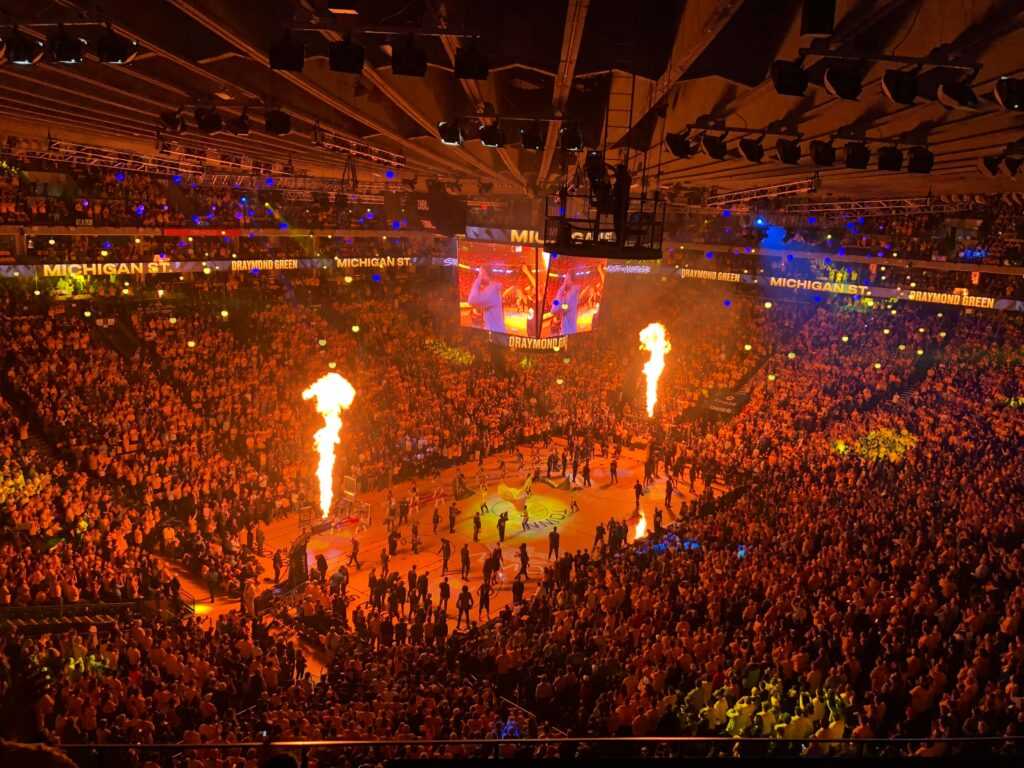What Makes a Game Competitive?
A game becomes competitive by combining several key elements. Skill ceiling affects competitive balance. Players need ample room to improve and differentiate themselves from their opponents. Strategic depth defines a game’s tactical complexity. Games like “League of Legends” and “Dota 2” offer a variety of strategies, leading to unpredictable outcomes and thrilling matches.
Balanced mechanics are crucial. Each character, weapon, or unit must be viable to avoid dominance by any single element. Community support and esports infrastructure, including tournaments and streaming platforms, enhance a game’s competitive scene, fostering growth and engagement. Recognizable achievements, like ranking systems or leaderboards, bolster motivation.
Engaging viewer experience contributes to a game’s popularity among fans. Spectator-friendly interfaces and clear action visuals are essential for drawing and retaining audiences in games like “Counter-Strike: Global Offensive” and “Overwatch”.
Criteria for Selecting the Top Games
- Several factors determine which games shape the competitive gaming landscape.
- I consider key aspects like a high skill ceiling, which provides room for player growth and complex strategies, essential for competitive depth.
- A game with balanced mechanics ensures that mastery, not technical flaws, dictates outcomes.
- Community engagement is vital.
- Active fan support and a robust esports infrastructure, like frequent tournaments and accessible streaming, drive a game’s popularity.
- Recognizable achievements, such as ranking and reward systems, motivate players to improve.
- Finally, an engaging viewer experience captivates and retains audience attention, making it indispensable for a game’s longevity in competitive gaming.
Game 1: League of Legends
League of Legends, developed by Riot Games, stands as a cornerstone in the competitive gaming arena. It combines strategic depth, fast-paced gameplay, and a vibrant community, fostering a dynamic esports scene.
Overview
League of Legends launched in 2009 and quickly rose to prominence with its unique blend of strategy and action. As a Multiplayer Online Battle Arena (MOBA), it pits teams of five players against each other, requiring skillful coordination and strategic planning. Players select champions, each with distinct roles and abilities, adding layers of complexity and depth to team strategies.
Impact on Competitive Gaming
League of Legends has significantly influenced competitive gaming through its structured competitive ecosystem and massive viewership. The annual League of Legends World Championship showcases top-tier talent, attracting millions of viewers globally.
Riot Games’ commitment to the competitive scene, through well-organized leagues and tournaments, has set a benchmark for other esports titles.
This structured ecosystem ensures that both casual and professional players have opportunities for growth and achievement. With its engaging gameplay and robust infrastructure, League of Legends continues to shape the future of esports.
Game 2: Counter-Strike: Global Offensive
Counter-Strike: Global Offensive (CS: GO) remains a cornerstone in the competitive gaming scene. Known for its tactical gameplay and strategic depth, it attracts millions of players and viewers worldwide.
Overview
CS: GO, developed by Valve and Hidden Path Entertainment, launched in 2012. Set in a first-person shooter format, teams of terrorists and counter-terrorists compete in objectives such as bomb planting or hostage rescue. Its high pacing and precision demand impeccable teamwork and individual skill. This game’s accessible mechanics and deep tactical layers attract a wide range of players and sustain its tournament popularity.
Impact on Competitive Gaming
CS: GO’s influence on esports is profound. Its emphasis on strategy and reflexes creates a high skill ceiling, fostering competitive growth. Renowned tournaments like the ESL Pro League and Intel Extreme Masters highlight top-tier play and global competition.
The game’s robust matchmaking system and ranking structure drive player progression and engagement. Dedicated fans and streaming platforms, such as Twitch, amplify its viewership, ensuring continual interest in esports.
This enduring legacy and reliable infrastructure make CS: GO a pivotal part of the competitive gaming landscape.
Game 3: Dota 2

Dota 2, developed by Valve, has carved out a substantial niche in competitive gaming with its rich strategic depth and complex mechanics. Released in 2013, it’s a leading title in the Multiplayer Online Battle Arena (MOBA) genre.
Overview
Players command powerful heroes in Dota 2, each with unique abilities. Strategic coordination among the five team members is vital for success. Players battle to destroy the opposing team’s Ancient, a large structure located within their base. The game’s dynamic meta, with frequent updates, challenges players to adapt continually. This, combined with its high skill ceiling, creates a diverse and evolving competitive arena.
Impact on Competitive Gaming
Dota 2’s influence in esports is profound. Its flagship tournament, The International, offers one of the largest prize pools in esports history, attracting top talent globally.
Through engaging storytelling and comprehensive broadcasts, it captivates millions of viewers. Valve’s commitment to community-driven content and updates ensures an active, engaged player base. This, alongside a robust esports infrastructure, reinforces Dota 2’s standing as a cornerstone of competitive gaming.
Game 4: Valorant
Valorant, developed by Riot Games and launched in 2020, swiftly became a critical addition to the competitive gaming roster. Combining elements of tactical shooters and character-based abilities, it offers a fresh experience for both players and spectators.
Overview
Valorant features teams of agents each possessing distinct abilities competing in objective-based matches. Players must balance strategic thinking with precise shooting to outsmart opponents. Its 5v5 format, akin to games like Counter-Strike, emphasizes coordination and skill. Featuring diverse maps, distinct abilities, and a range of weapon choices, it challenges players to adapt to various scenarios.
Impact on Competitive Gaming
Valorant redefined expectations for tactical shooters in esports. With its robust esports infrastructure, including the Valorant Champions Tour, it offers structured pathways for players aspiring to go pro.
The game’s frequent updates and balance patches ensure a dynamic meta that keeps the community engaged. Valorant’s integration of tactical shooter mechanics with character abilities has broadened the appeal of tactical FPS games, drawing players from diverse backgrounds and enhancing its position within competitive gaming.
Riot Games’ commitment to fostering a healthy competitive environment drives Valorant’s continual growth and prominence in esports.
Game 5: Fortnite
Fortnite, developed by Epic Games and released in 2017, revolutionized the battle royale genre and reshaped the competitive gaming scene. It’s a vibrant blend of combat, building, and creativity that appeals to players and viewers alike.
Overview
Epic Games designed Fortnite to combine fast-paced action with dynamic building mechanics, allowing players to craft structures for defense and strategic advantage. This unique blend of gameplay elements sets Fortnite apart from other battle royale titles. The game features numerous modes, including:
- solo
- duo
- squad formats
catering to diverse player preferences. Fortnite’s continuous updates and varied seasonal content inject fresh experiences, attracting a vast player base. The game’s colorful aesthetic and engaging mechanics expand its appeal beyond traditional shooter fans.
Impact on Competitive Gaming
Fortnite redefined competitive gaming by emphasizing player creativity alongside combat skill. Epic Games invested in solidifying its position in the esports landscape, exemplified by events like the Fortnite World Cup, which offered massive prize pools and drew millions of viewers.
Professional gaming careers blossomed, with streamers and players gaining large followings and forging robust communities. The game’s unique building mechanic has led to varied and innovative competitive strategies, pushing players to continually adapt and evolve. Streaming platforms amplify viewer engagement by showcasing high-level gameplay and unique in-game events, further enhancing Fortnite’s impact on the esports scene.





